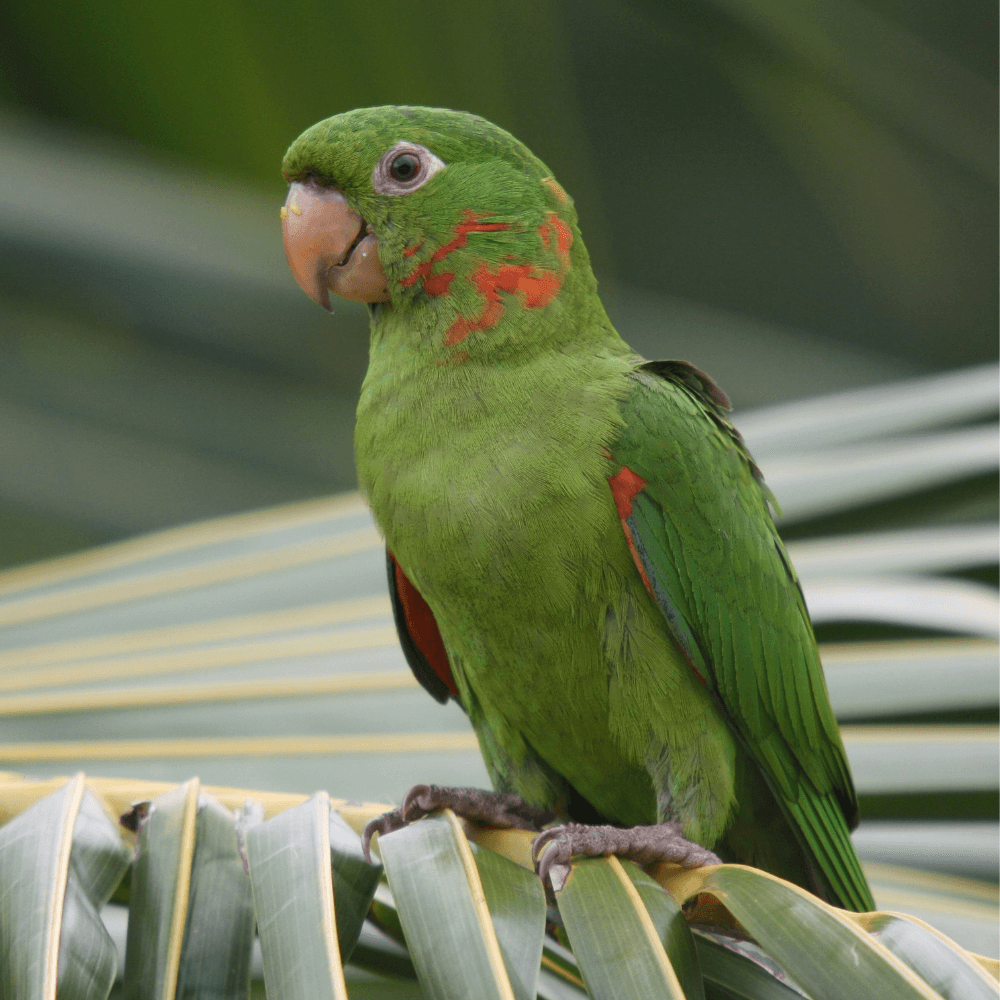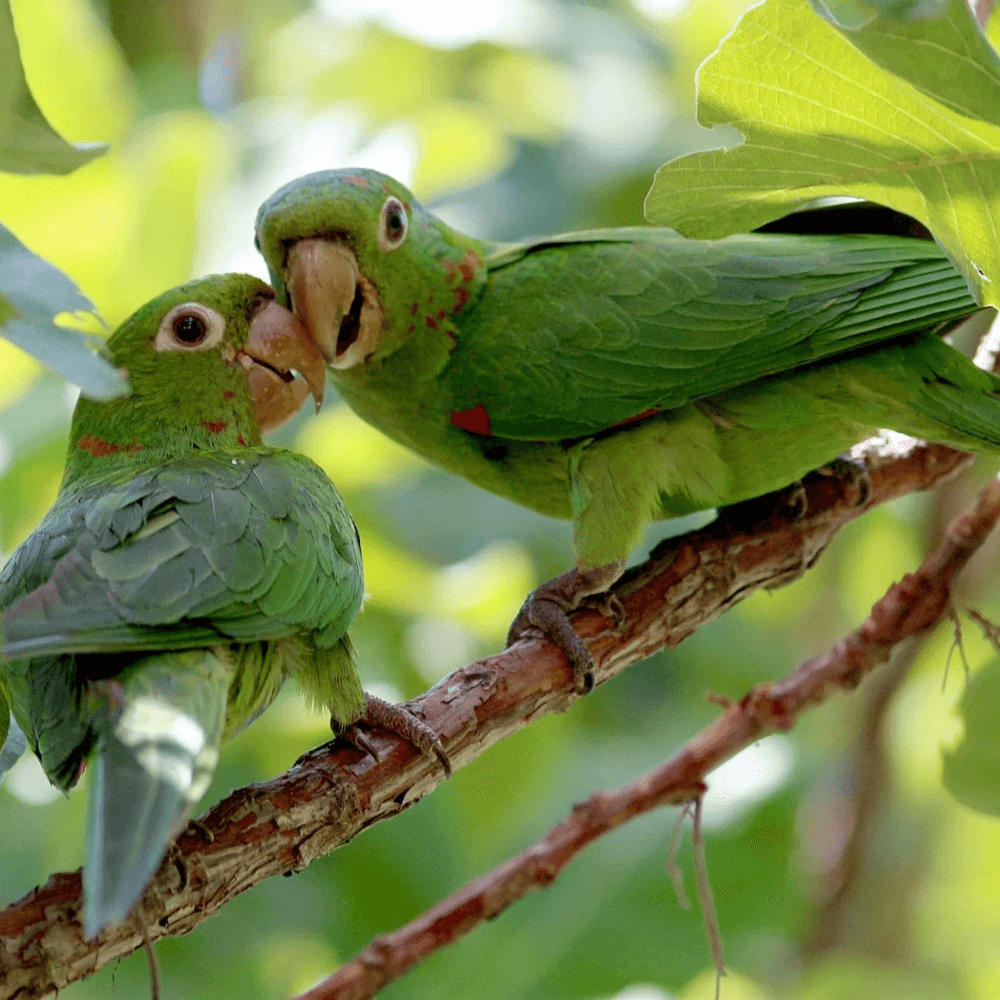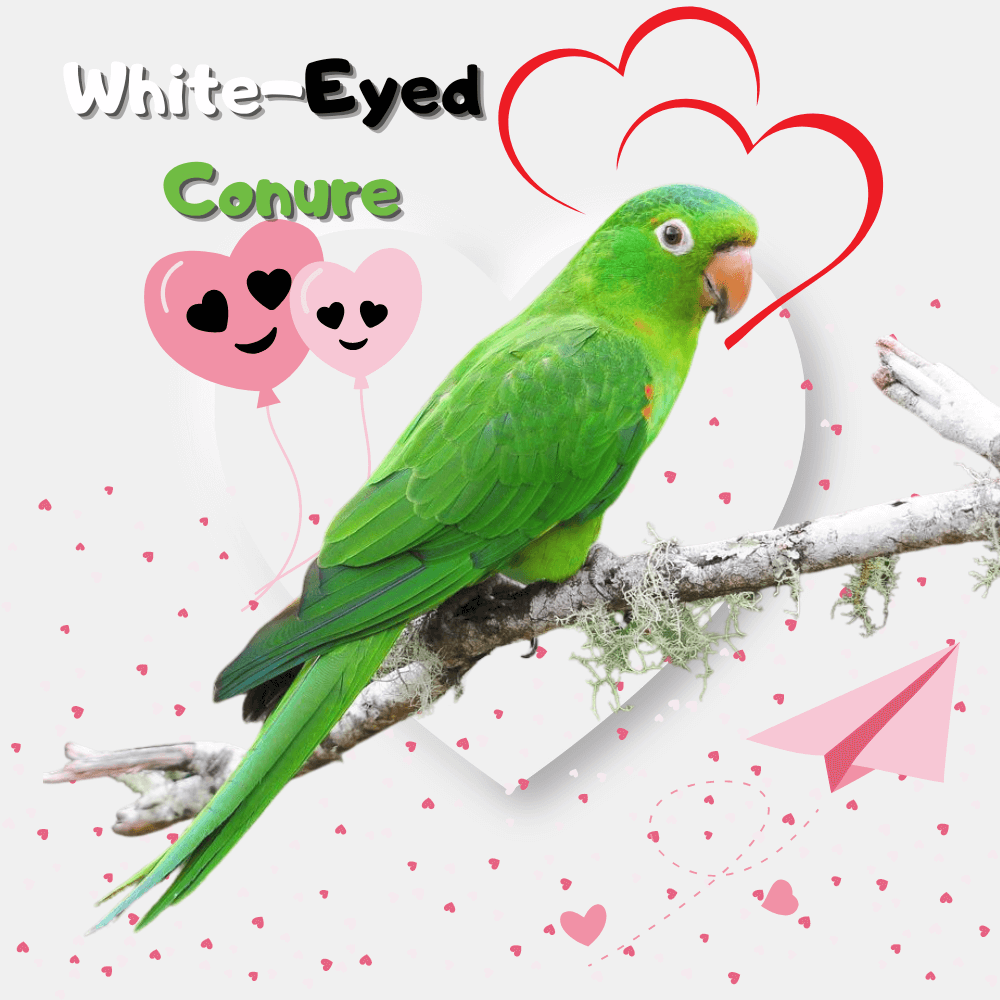White-eyed conure: white-eyed parakeet is a small green parrot that is one of the most well-behaved pet species. It is less noisy than many other parrots, non-destructive, and more likely to want to talk than to scream. Properly socialized white-eyed conures can make loving and entertaining pets.
Common names: White-eyed conure, white-eyed parakeet
White name scientist: Aratinga leucophthalmus has two subspecies: the Argentine white-eyed conure (Ara tinga leucophthalmus propinqua) and the Equator white-eyed conure (Aratinga I. callogenys)
adult size: The white-eyed conure is a medium-sized conure, about 13 inches long. Its wings are between 6.5 and 7.5 inches long. The Argentine white-eyed conure is slightly larger than the Ecuadorian subspecies.
white eyed conure lifespan: About 20 years old
White-eyed conure habitat
The white-eyed conure is originally native to northern South America. Its range extends from Venezuela, Colombia, and the Guianas in the north, to northern Argentina and Uruguay, passing through Brazil. The bird’s preferred habitats are forests, woodlands, savannahs, and mangroves.
The bird was first described and cataloged by German zoologist Phillipp Ludwig Muller in 1776. Its scientific name is derived from the ancient Greek words “leukos” meaning “white” and “ophthalmus” meaning “eye”.
The white-eyed conure remains abundant in the wild, despite being heavily trafficked in the pet trade.
White-eyed conure personality

White-eyed conures are striking birds that make great pets for the right people. They are very intelligent and inquisitive parrots, making them eager to explore and prone to getting into trouble when left unattended.
However, when properly cared for, owners of white-eyed conures report that these birds are extremely affectionate and entertaining. White-eyed conures need the proper mental stimulation to prevent boredom and behavioral issues from setting in.
For a conure, this species is one of the most tamed and will learn to talk. They need attention, patience and toys. This bird likes to climb and play.
People interested in owning a white-eyed conure should make sure they can dedicate at least 3-4 hours a day to interacting with their pet. Bored animals can become lethargic and adopt destructive habits, such as feathering.
White-eyed conure sounds
Although not among the loudest parrots, potential owners should be aware that like all conures, these birds have high-pitched, loud voices when they want to use them. That’s why white-eyed conures aren’t necessarily the best pets for those who live in apartments or condominiums with immediately adjacent neighbors.
White-eyed Parakeet Colors and Markings
Adult white-eyed conures have mostly green bodies with red spots on their heads and wings. The inside of their wings also features a random scatter of bright yellow feathers with red tips. The underside of the wing and tail feathers are olive-yellow. The bird may appear to be all green, until the wings open, revealing dramatic flashes of yellow and red. Its eyes are framed by rings of bare white skin, hence its common name.
White-eyed conures have horn-colored beaks and gray feet and legs. The Ecuadorian white-eyed subspecies have slightly darker plumage and a prominent beak. Males and females can only be differentiated by genetic testing or a surgical sexing procedure.
Caring for White-Eyed Conures
A single bird needs a large cage, at least 24 inches by 24 inches in footprint, and at least 36 inches tall. Equip the cage with sturdy perches and toys. Outside the cage, make sure there is some sort of playpen where the bird can explore and exercise while flying around the house. In the wild, these birds fly long distances while foraging with other birds. They, therefore, need space and opportunities to satisfy this instinct when kept as pets.
White-Eyed conure health

The white-eyed conure may be susceptible to bleeding conure syndrome. Symptoms include loss of balance, weakness, and bleeding from the mouth. It usually occurs in stressed birds, especially when young. Vitamin supplements and feeding birds leafy green vegetables can provide the vitamin K needed to prevent the syndrome.
Feathering can occur in birds that are bored from lack of stimulation. Prevent this phenomenon by spending a lot of time playing and socializing with your bird.
White-Eyed conure diet
In the wild, this bird feasts on seeds, nuts, fruits, and berries. Like all parrots, white-eyed conures eat a diet of fresh fruits and vegetables, supplemented with a diet of high-quality commercial pellets.
You can give them an unlimited amount of food in the form of pellets; they will only eat what they need. As for fresh fruits and vegetables, offer them about 1/8 to 1/4 cup in the morning and evening.
You can offer a small amount of seeds for treats, but make sure your white-eyed conure doesn’t get too many seeds in its diet. These birds have a reputation for favoring fattening seeds like sunflower and safflower, which can turn into refusal of any other food. Pay attention to your conure’s diet to ensure your pet’s health and happiness.
Offering a steady supply of branches with flowers and buds will provide extra nutrition and satisfy the bird’s urge to chew and gnaw.
Toxic food for parrot
As with many pet birds, keep chocolate and avocado away from your white-eyed conure; these substances are toxic to them.
White eyed conure price
Before buying a conure from a bird shop or breeder, check animal shelters and rescue organizations. White-eyed conures are hard to find in pet stores and breeders. Captive breeding takes some time to establish. They usually cost between $600 and $1,000. Some adoptions or rescues that may feature white-eyed conures include

